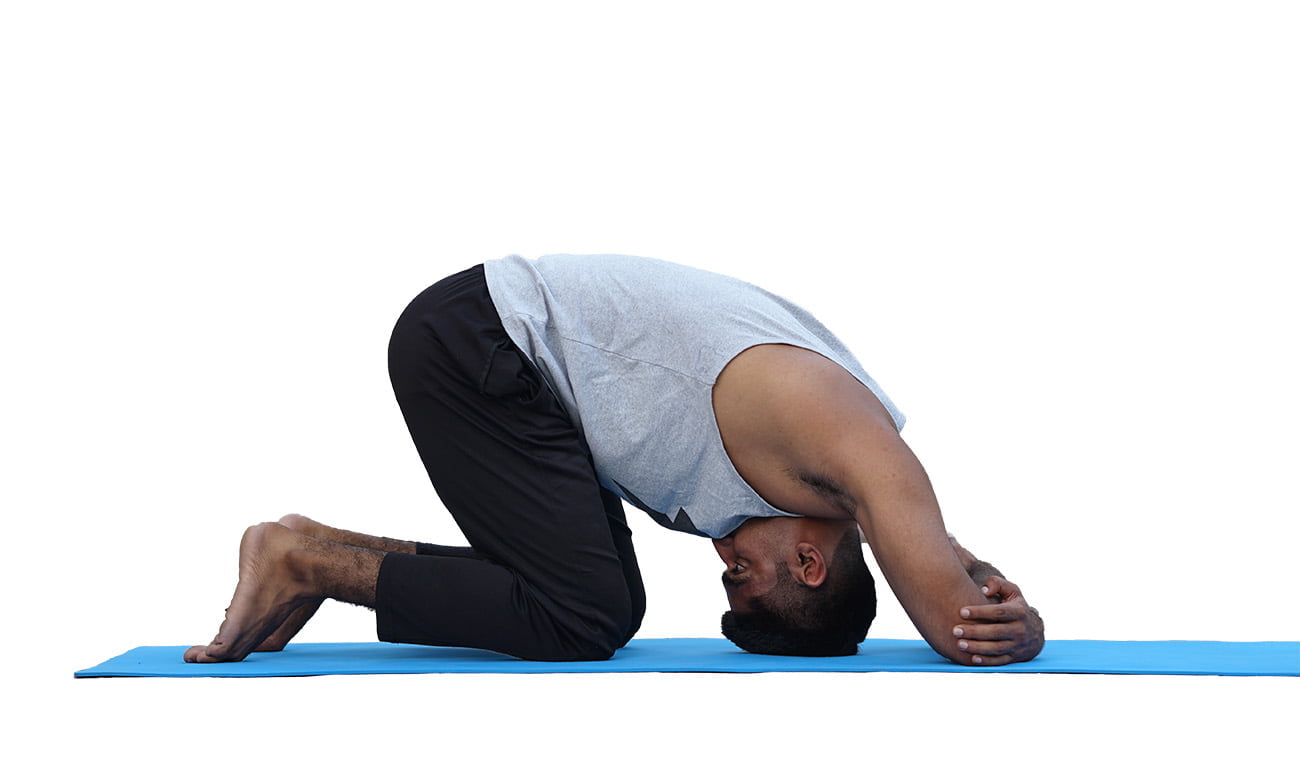Rabbit Pose (Sasangasana)
Difficulty Level- Beginner
Also Known as: Hare Pose, Shashankasana
Pose Type: Stretching, Restorative
Table of Contents
Introduction Of Rabbit Pose
Rabbit pose, also referred to as Sasangasana or hare pose, is a yoga posture that brings back fond memories of childhood playfulness and a deep connection to nature. The name Sasangasana comes from the Sanskrit word “sasanga,” which means “having the marks of a hare.” In this pose, the rounded shape of the back resembles the moon and the shadow of a rabbit.
The pose offers a controlled stretch to the neck and upper spine, which can help relieve tension and promote relaxation of the nervous system. Some practitioners find that regular practice of rabbit pose helps them fall asleep more easily. Additionally, the throat lock of the pose is believed to benefit the thyroid and parathyroid glands, and it may also help relieve sinus problems and head colds.
As with all yoga poses, it’s important to practice rabbit pose mindfully and only go as far as feels comfortable for your body.
How To Do Rabbit Pose: Step-By-Step Video
1. Begin in Thunderbolt Pose (Vajrasana), and slowly bend to Child Pose (balasana) with your hands holding onto your heels and your forehead resting on the floor.
2. Inhale deeply and lift your hips towards the ceiling, rolling onto the crown of your head and pressing your forehead as close to your knees as possible. Hold onto your heels tightly as you do this.
3. Take 5 deep breaths in this position, feeling the stretch in your back and legs.
4. To release, slowly exhale and lower your hips back down to your heels. Slide your forehead back to the floor and return to Thunderbolt Pose (Vajrasana).
Rabbit Pose Benefits
- Rabbit pose helps in Stretching the spine, shoulders, and neck.
- This pose is a gentle forward fold that can help to calm the mind and reduce stress and anxiety.
- The Rabbit Pose stimulates the digestive system and can help to relieve constipation and other digestive issues.
- As the head is lowered towards the ground, the Rabbit Pose can help to increase blood flow to the brain, which can improve mental clarity and concentration.
- Rabbit Pose helps in relieving tension in the back and neck.
Rabbit Pose Precautions & Contraindications
- Neck injuries: If you have a neck injury, it’s best to avoid this pose or modify it by using a blanket or pillow to cushion your head.
- Pregnancy: If you are pregnant, it’s best to avoid this pose, especially in the later stages of pregnancy.
- Knee injuries: If you have a knee injury, be careful not to put too much pressure on your knees when coming into and out of the pose.
- Low back pain: If you have low back pain, be careful not to overstretch your spine in this pose.
Avoid Rabbit Pose if you have any recent injury or chronic pain in the shoulders, back, or hips.
Rabbit Pose Variation:
1. Rabbit Pose With Elbows Band

Steps To Follow:
- Start with Thunderbolt Pose (Vajrasana).
- Grab your elbows behind your back and your forehead resting on the floor.
- Take 5 deep breaths and return back to Vajrasana.
2. Rabbit Pose With Elbows On Ground

Steps To Follow:
- Start with Thunderbolt Pose (Vajrasana).
- Grab your elbows and your forehead resting on the floor.
- Take 5 deep breaths and return back to Vajrasana.
3. Rabbit Pose With Extended Arms

Steps To Follow:
- Start with Thunderbolt Pose (Vajrasana).
- Interlock your fingers at back and slowly go forward head resting on ground.
- Stay there for 5 deep breaths and return back to Vajrasana.
Frequently Asked Questions (FAQs)
What is Rabbit Pose good for?
Rabbit Pose is good for Stretching, increasing blood flow to brain and relieving tension in the back and neck.
What is Sanskrit for Rabbit Pose?
Sasangasana
What are the names of rabbit poses?
Sasangasana, Shashankasana and Hare Pose

